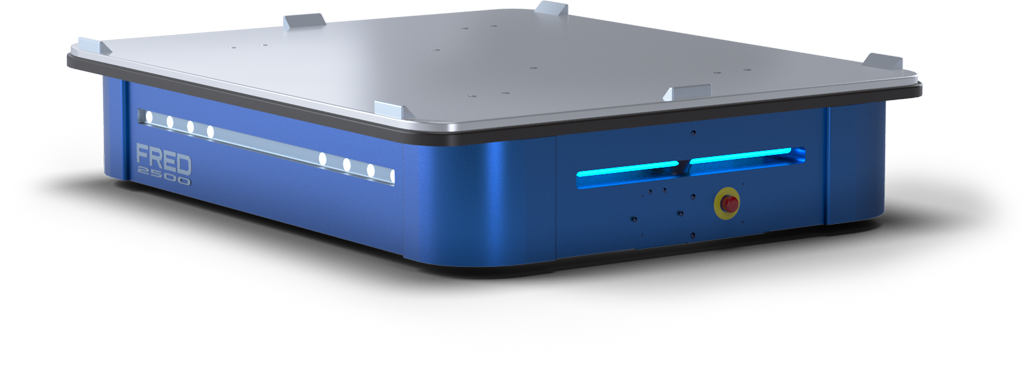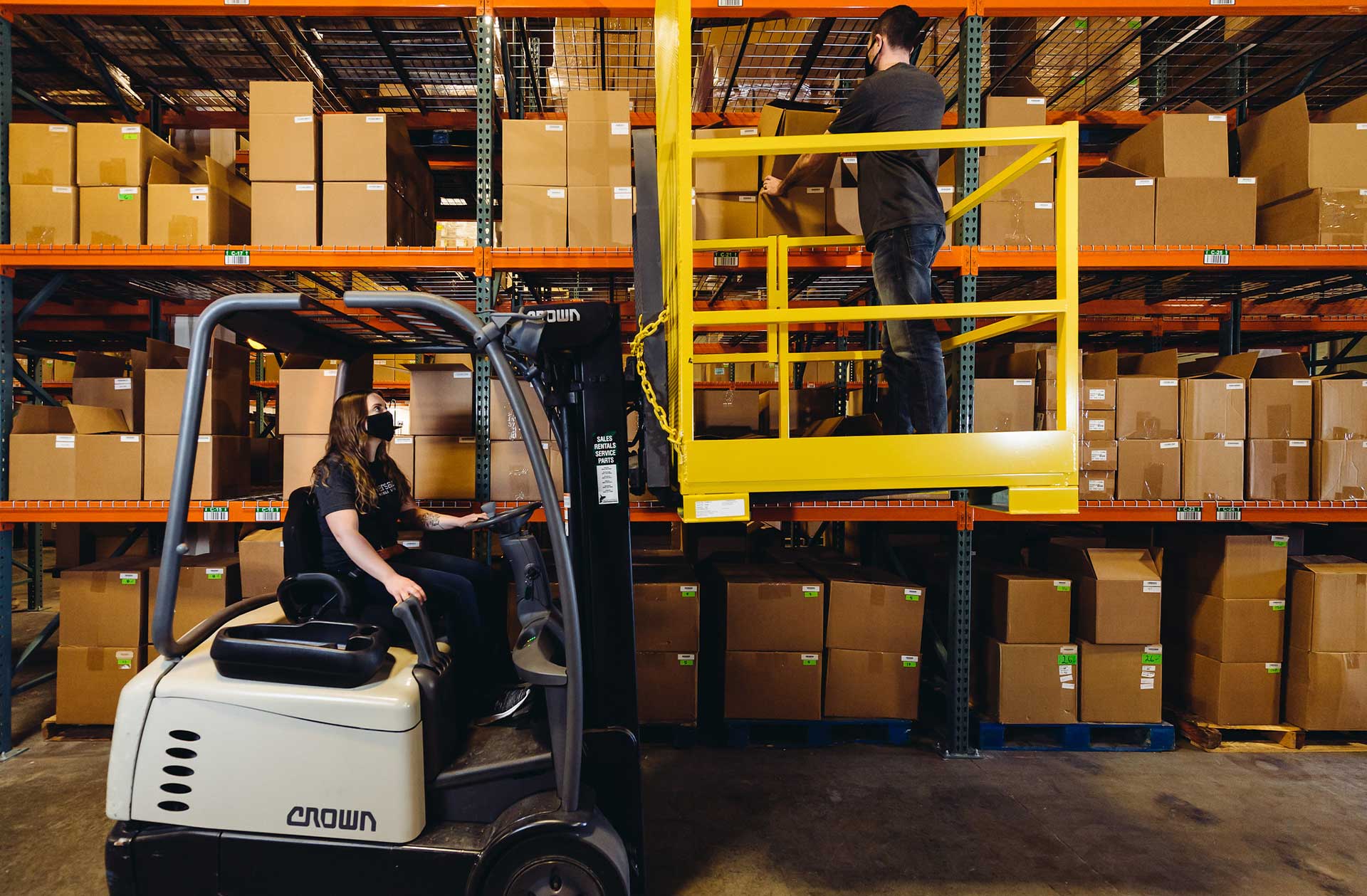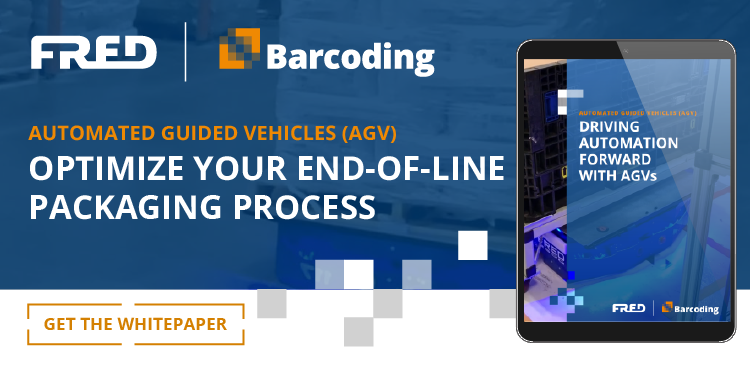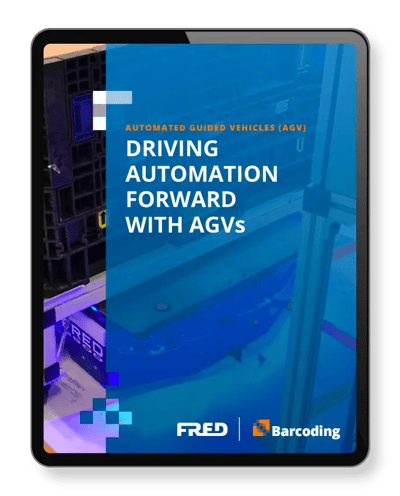Effective material handling is vital to manufacturing and supply chain operations. Fork trucks, pallet jacks, and automated solutions, often in a mixed array, are the lifeblood of any industrial workplace.
So if you’re looking at adding another forklift to your fleet—or finding a replacement for an outdated or unreliable machine—a lot rides on your decision.
The ideal material handling solution combines:
- Safety—Minimizing risk of collision, accidents, and injuries
- Dependability—Consistent performance and minimal downtime
- Efficiency—Optimized material flows and throughput
- Cost-effectiveness—Competitive upfront costs, speed to ROI, and long-term value
If what you’re using today is a fork truck, it can be tempting to think only in terms of human-operated equipment, whether you’re looking to lease or buy. But before committing to a lease or purchase agreement, it’s smart to take an in-depth look at the pros and cons of both automated guided vehicles (AGVs) and forklifts.
Every operation is unique, and ensuring your investment aligns with long-term operational goals is just smart business. So let’s look a little closer.
Download Now—Driving Automation Forward with AGVs
Material Handling Equipment is a Must
Effective material handling is like a healthy circulatory system in manufacturing, warehousing, and logistics operations. It’s how you execute the strategic movement, storage, and control of materials and products. When it’s working, it maximizes productivity and optimizes workflows while minimizing costs, risks, and waste.
But if you’re looking for replacement or additional handling equipment, it’s likely your current equipment and configurations aren’t delivering optimally for your current needs. If production demand is up, congratulations—but if you’re dealing with any of these issues, another forklift might not be your best option:
- Equipment downtime
- Safety issues
- Worker shortages
- Facility expansion
Take a Look—How AGVs Help Drive Automation Forward
Aging forklifts, especially given volatile fuel costs, can become inefficient and expensive to operate. Replacement parts get hard to find, and supply chain issues can mean waiting for weeks or more with a parked fork truck. Old models lacking safety features can add to insurance costs. But those aren’t the only costs to consider. When you bring another forklift onboard, you’ll need an operator—who’ll need proper training and certification—one for each fork truck, per shift.
And if you’re adding rather than replacing, there’s a lot more to think about than costs. Increasing traffic means operator awareness and communication are even more critical for safety. More forklifts can mean more blind spots (and more honking horns around workers on the floor), more tight spaces, more congestion, and more potential for injury or damage to assets and materials.
Given the current labor shortage, how do you know you can find, hire, certify, and retain the drivers you need to actually keep the forklift in motion? And if automation is anywhere on your horizon, does it make sense to add the need for another human operator right now?
What role does a fork truck and driver combo play in future-proofing or scaling operations? How do emissions from gas- or diesel-powered machines factor into your company’s sustainability plans?
Fork Truck Versus Automated Guided Vehicle: A Head-to-Head Comparison
To keep the comparison as close as possible, let’s use a new, standard fork truck and a basic, heavy-duty Fred. Consider your own operational needs, and explore how each option can meet your material handling needs.
|
Criterion |
Standard Forklift |
Fred |
|
Initial investment (assuming purchase) |
$20,000 to $50,000 |
About $35,000 (for a Fred AGV) |
|
Operating costs |
Based on fuel costs (gas, propane, diesel) and subject to price volatility |
Electricity: $1–6 per charge; more predictable, with renewable options available |
|
Lead time |
Under normal circumstances, 4–8 weeks, but current wait time can exceed 6 months |
Take delivery of a USA-assembled Fred in as little as 2–4 weeks |
|
Safety |
|
|
|
Direct labor costs |
(Per operator): fully burdened wage rate, ongoing safety and operational training time, certification time, maintenance |
Once installed and operating, time for regular maintenance and upkeep; can operate around the clock with no operator cost |
|
Footprint / Maneuverability |
Tight spaces and narrow passages can pose challenges |
Very compact and maneuverable |
|
Payload |
Depends on rated load capacity and features, but a basic internal combustion, sit-down model can max out at less than 3,000 lb. |
Fred handles a 2,500 lb. max payload PLUS 5,000 max tow load |
|
Time to ROI |
5–10 years, varies by utilization rate and dependent on shifts and worker availability |
As little as 4 months |
|
Options to acquire |
Buy or lease |
Buy, lease, or benefit from robots-as-a-service (RaaS) |
|
Future-proof? |
Vulnerable to worker shortages and fuel cost spikes; not automation-friendly |
No operator needed; less volatile energy prices; flexible route planning; scales easily from single AGV to a full fleet; can integrate with future industrial automation |
This is just a start of the considerations involved in selecting your next material handling equipment solution, and your choices aren’t limited solely to a fork truck or an AGV.
But it’s a good start, and it’s important to make sure you’re not bringing unwarranted assumptions to the comparison. For example, not all AGVs need complex software, ongoing IT involvement, or even WiFi access to get up and running. In fact, Fred can be set up in as little as two hours and is impervious to IoT security threats. Fred doesn’t require hard infrastructure installations, either, so it’s fast and easy to install—and to redeploy when and where it’s needed.
What About a Used Forklift?
Let’s say you found a bargain on a used forklift that’s roughly comparable in terms of payload capacity, for around $10,000. It’s in great condition, so maintenance costs will be low, and it has an expected lifespan of 10 years, operating 1,500–2,000 hours a year. This is a great forklift for a great deal, right? At about $1,000 a year, it sure looks OK—but it needs a human operator, too. One for each shift.
At $15 per hour base pay, the fully burdened wage rate for that operator is more than $38,000. For a second shift (and a third), you need another material handler (and another). Remember, too, they’ll need time off throughout the year—be sure to account for coverage or downtime.
The bottom line is this: Industrial operations can be complex. Often what looks like a simple task on your to-do list (order a new forklift) is actually a complex decision with a lot of interdependencies—like energy costs, staffing, IT capacity, maintenance capabilities, and capital availability.
As the lifeline that connects and optimizes the production process, material handling plays an essential yet often overlooked role across industries. AGVs are transforming material handling, making it smarter, more flexible, and more reliable than ever. Incorporating AGVs into your operations can directly improve safety, address bottlenecks, reduce human error, and optimize floor space usage.
There’s a lot more to learn about how AGVs are putting automation within reach for more industrial applications than ever before. Download our free whitepaper to see how AGVs are driving efficiency and productivity by bringing automation to end-of-line (EOL) packaging.



